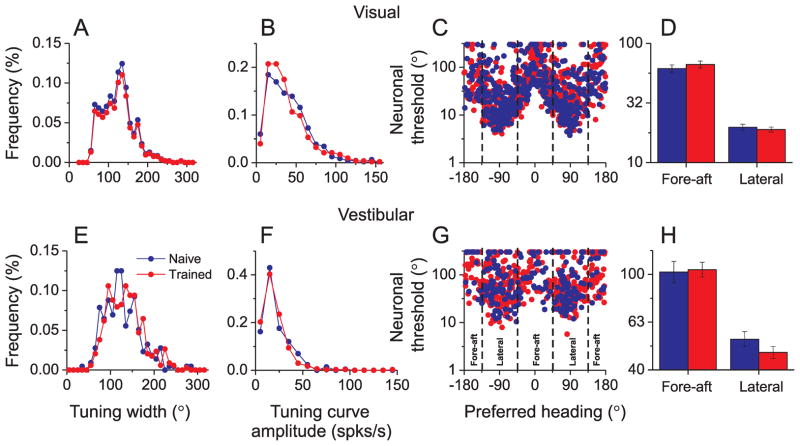Figure 4.
Effects of training on heading tuning in MSTd during visual (top) and vestibular (bottom) stimulation. (A, E) Distributions of tuning width (full width at half-maximum response) for naïve (blue) and trained (red) animals. (B, F) Distributions of tuning curve amplitude (peak to trough modulation). (C, G) Neurons preferring lateral headings are more sensitive to heading variations around straight ahead than neurons preferring fore-aft motion, with little difference between naïve and trained animals. (D, H) Comparison of average neuronal sensitivity between fore-aft and lateral neurons (see panel G). Data were culled from a large database of MSTd neurons recorded with a single electrode. Only neurons with significant heading tuning (p<0.05, ANOVA) were included (visual: n=992; vestibular: n=556).

